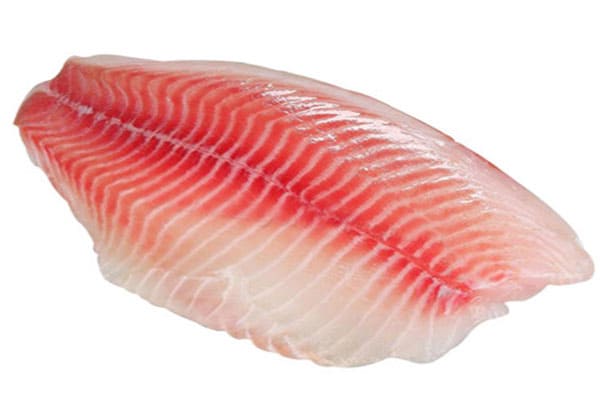
Have you ever stood at the fish market and wondered whether to pick red snapper or tilapia for dinner? It’s a question I’ve often asked myself. Though both are popular, these fish are worlds apart regarding where they come from, what they eat, how they spawn, and their taste.
- Red snapper and tilapia differ in identity, diet, habitat, mating habits, and flavor. Red snapper is a saltwater fish with a rich, slightly sweet taste, while tilapia is freshwater and has a mild, almost neutral flavor. Understanding these distinctions can help you choose your next meal or supply your fish business.
But let’s dive deeper into each of these points.
How Do Red Snapper and Tilapia Differ in Identity?
Red snapper and tilapia come from very different families.
Red snapper is a saltwater fish found in the Gulf of Mexico and along the Atlantic coast. On the other hand, Tilapia is freshwater and originally from Africa but now farmed worldwide, especially in places like China where we supply many importers at yanghuafishery.
Red snapper typically has a bright reddish-pink hue with a firm texture, while tilapia is more silvery or black and noted for its mild flavor.
Dive deeper below to see why these differences matter, whether you’re a home cook or a supplier.
How Does Their Diet Affect Their Characteristics?
A fish’s diet shapes its flavor and nutritional profile.
Red snapper feeds on crustaceans and smaller fish, soaking up the ocean’s rich flavors. Tilapia, a freshwater omnivore, eats everything from algae to plant matter, making its taste milder.
Red snapper’s varied ocean diet contributes to its subtly sweet flavor, while tilapia’s simpler, plant-based diet results in a more neutral profile. This is why red snapper often commands a higher price at restaurants, and tilapia is favored for everyday meals due to its versatility.
I’d like you to please dive deeper below to understand how different diets impact taste, texture, and market value.
What About Their Habitats?
Habitat is a huge factor in a fish’s behavior and growth.
Red snapper thrives in saltwater reefs and rocky outcrops, preferring warmer coastal waters. Tilapia is a freshwater fish commonly farmed in ponds and lakes, making it more accessible to wholesalers, factories, and proveedores who handle frozen fish for global export.
Red snapper requires reef-like conditions with plenty of hiding spots, while tilapia adapts well to crowded ponds, making farming easier and cheaper.
You can go deeper below to see how habitat differences influence farming and availability.
Are Their Mating and Spawning Behaviors Different?
Red snapper and tilapia also have unique mating and spawning rituals.
Red snapper spawns offshore in deeper waters, releasing eggs that float with currents. Tilapia builds nests in shallower, warmer waters, often forming small colonies. If you run a fish factory or act as a supplier, understanding these breeding habits can help you manage stocks sustainably, ensuring a steady supply and stable costs.
Red snapper relies on vast ocean currents for egg dispersion, while tilapia is more straightforward to breed in controlled environments, making it a staple choice for farmers worldwide.
Please dive deeper below to discover how these reproductive strategies impact fish populations and the seafood market.
Dive Deeper: Taste Differences and Cooking Tips
Taste often becomes the deciding factor when choosing fish. Here’s a more in-depth look at flavor and cooking approaches:
Flavor Profiles
- Red Snapper: Slightly sweet, with a firm yet moist texture. Some describe a hint of nuttiness, reminiscent of the ocean.
- Tilapia: Mild and neutral, almost like a blank seasoning canvas. It’s perfect if you’re trying to please a crowd with various tastes.
Cooking Suggestions
| Fish Type | Cooking Method | Flavor Enhancement Ideas |
|---|---|---|
| Red Snapper | Grilling, Baking | Garlic butter, herbs, lemon slices |
| Tilapia | Frying, Steaming | Spicy marinades, citrus-based sauces |
Red snapper’s firmer flesh holds up well to high-heat methods like grilling or baking. Consider a garlic-herb rub or a lemon-butter marinade if you love robust flavors. Tilapia’s delicate texture pairs well with lighter touches—maybe a citrus-based sauce or a dash of chili and lime.
Personal Anecdote
I once tried pan-searing a thick red snapper fillet with a little butter and thyme, and the flavor was unforgettable—rich yet not overpowering. On another night, I baked tilapia in a mild soy-ginger marinade to please my family’s varied tastes. Both meals were winners, but they delivered utterly different dining experiences. Suppose Doucoure, my tilapia-importing friend in Africa, tasted the red snapper. In that case, he’d probably note its richer oceanic character—and maybe consider adding it to his product line for customers wanting a premium catch.
Conclusion
Red snapper and tilapia may look similar in fillet form, but their diets, habitats, spawning behaviors, and flavors set them apart. Red snapper brings a sweet ocean essence, while tilapia offers a milder, more versatile profile. At Yanghuafishery, we embrace both options, ensuring you get the best fit for your business or dinner table.




